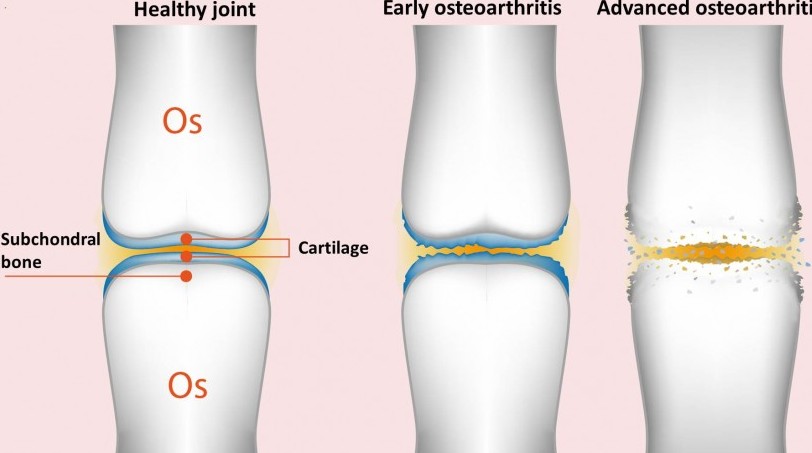DO U KNOW THESE FACTS ON YOUR CARTILAGE?
You wouldn’t be able to walk, run or jump without cartilage
While it’s common to experience pain and inconvenience due to cartilage issues, most of us have no idea how to protect or improve the health of our cartilage. Here are some interesting facts about cartilage so you can understand how to keep yours intact for many years to come.
Your body has three different types of cartilage
There are three different types of cartilage found in the body: articular, elastic, and fibrocartilage.
Articular cartilage is found at the end of the bones in your joints, allowing the joints to change positions without any grinding or friction.
Elastic cartilage is more flexible and gives your ears and nose their unique shape. This cartilage is also found in your epiglottis, which is the flap attached to the base of the tongue that prevents food and liquids from entering your windpipe as you eat and drink.
Lastly, there’s fibrocartilage, which has a high density of strong, fibrous collagen. This type of cartilage helps absorb shock from impact in important parts of the body like the spine. This allows you to jump up and down without damaging your vertebrae.
Cartilage contains no nerves and no blood
Cartilage is a tough but flexible tissue that only has two components: water and matrix. About 65% to 80% of articular cartilage is water, but it decreases with normal aging.
The structural element of cartilage is called matrix, and it is comprised of collagens, proteoglycans, and other types of proteins. The different types of cartilage have different properties that allow for specific functions in the body.
Cartilage lacks a blood supply, nerves, and lymphatic system. Chondrocytes are the only type of cells found in cartilage; these specialized cells produce and maintain the cartilage matrix.
Cartilage changes as you age
In a joint, bones do not directly contact each other. They are cushioned by articular cartilage that lines the joints, synovial membranes around the joint, and lubricating synovial fluid inside the joint. As you age, joint movement becomes stiffer and less flexible because the amount of lubricating fluid inside the joints decreases, and the cartilage becomes thinner. Ligaments also tend to shorten and lose some flexibility, making joints feel stiffer.
Many of these age-related changes to joints are not inevitable – they are simply caused by lack of exercise. Being inactive causes the cartilage to shrink and stiffen, reducing joint mobility. Conversely, regular movement of the joint, and the associated ‘stress’ of movement, helps keep the fluid moving to maintain joint health as you age.
Cartilage can wear down
Cartilage can become worn down as a result of an injury, or from simple wear and tear over time. However, there are some factors, which unfortunately, expedite the demise of cartilage.
Inflammation in the body can cause biological changes, which lead to the production of enzymes that break down cartilage. This is more common in people who are obese and have metabolic syndrome due to changes in the insulin response system, which destabilize the matrix of cartilage. Common medications such as NSAIDs, steroids, and local anesthetics also contribute to cartilage loss.
Cartilage does not contain nerves, so damaged cartilage does not necessarily cause pain. Instead, the damaged or missing cartilage causes other problems, such as friction between bones and changes to bone tissue, which can cause pain.
Damaged cartilage may attempt to produce new cells, but sometimes it is not enough to replace the missing cartilage. In addition, these new cells may grow in irregular, bumpy patterns rather than the smooth pattern of the original cartilage. Since cartilage is not very good at repairing itself, it is essential to support cartilage health preventatively.
Exercise supports cartilage health
At least half of the age-related changes to muscles, bones, and joints are caused by disuse. Recent studies show that fewer than one in 10 people over the age of 50 years do enough exercise to improve or maintain fitness levels.
Many people may forget that their bone health can be improved, and things that are good for the bone are also good for the cartilage. Exercise can prevent many age-related changes to muscles, bones, and joints – and reverse these changes as well. It’s never too late to start living an active lifestyle and enjoying the benefits.
Weight training exercises can strengthen muscles around joints, improve bone health, and prevent the cartilage from getting damaged. Also, maintaining a healthy weight can improve joint health by keeping added stress off the joint. It is also important to make sure that there is stability around the joints – that is, the ligaments, tendons, muscles, and nerves are healthy and functioning normally and in a balanced way. Doing a variety of exercises, such as walking, yoga, and weight training, can help keep all of this tissue in good shape throughout the years. Stretching is another excellent way to help maintain joint health and flexibility.
Getting a little bit more familiar with cartilage is a great way to maintain good health as you age. Why not give your cartilage a little TLC today?

